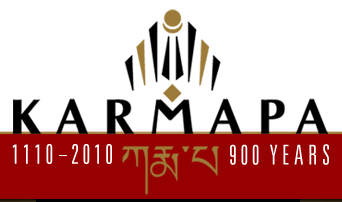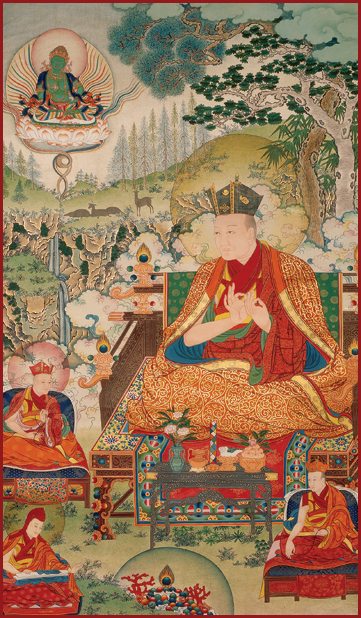Tibet produced three distinctive styles of painting over the centuries, and together these form the unique style so easily recognized as “Tibetan.” Of those three, one was developed within the fertile creative environment of the Great Encampment of the Karmapas, and is known as Karmapa’s Encampment Style—Karma Gardri in Tibetan.
Namkha Tashi, the first artist associated with the Karmapa Encampment style, was said to have been an emanation of the Eighth Karmapa, Mikyö Dorje. Until the 20th century, virtually all Tibetan art was religious art, and the very best of artists were commonly described as tulkus or emanations of great spiritual masters—which gives a good indication of the high esteem in which great artists were held in Tibetan society.
The Karmapa Encampment style of painting can be recognized for its tendency to place figures that follow the Indian proportions and painting conventions, in settings inspired by Chinese landscape painting. View examples of the Karmapa Encampment Style.
This fusion of styles was clearly intentional. Two of the Karma Kagyu lineage lamas—the Fifth Shamar Rinpoche and Fourth Goshir Gyaltsab Rinpoche—had given instructions, directing the early Encampment Style master to “draw bodily forms in agreement with Indian tradition, apply coloring and shading according to the Chinese tradition, and paint landscapes in what was known as the ‘Tibetan style,’ thus bringing together the excellent qualities of three great countries,” according to David Jackson, in his chapter on Karma Encampment style in his History of Tibetan Painting, p 173.
The Encampment Style spread outside the Karma Kagyu school as well, especially influencing the painting styles of Kham in eastern Tibet. In addition, a Garlug or `Encampment Tradition’ of sculpture also developed under the patronage and direction of the Karmapas.
To learn more about the Karma Kagyu contributions to Tibetan art, see David Jackson’s Patron and Painter: Situ Panchen and the Revival of the Encampment Style (published in 2009 by the Rubin Museum of Art) and History of Tibetan Painting by David Jackson (published in 1979 by Verlag der Österreischen Akademie der Wissenschaften).



